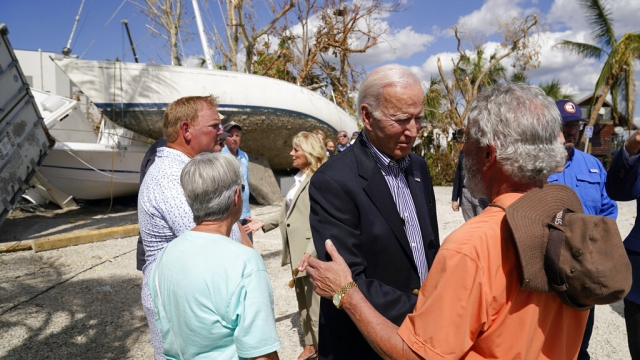From wildfires and hurricanes to mass shootings and terrorist attacks, Americans have come to expect their president to visit after disaster strikes. History shows it's a tradition that's been built over decades.
The purpose of a presidential visit is typically two-sided. Victims of a disaster are looking for comfort and empathy, but they also want to know what the government is doing to help.
"Whether it's a flood, or an earthquake, or these terrible fires that happened in Hawaii, it always involves the government, it always involves federal aid, because very often the states can't handle it themselves," said Elaine Kamarck, a senior fellow at the Brookings Institution.
Presidential travel requires a lot of security and resources on the ground, so the timing of a visit can make a big difference.
SEE MORE: Biden to tour Maui wildfire damage as mayor says 850 still missing
"It's a tricky business, right? You you can't wait too long; it looks like you don't care, you're not paying attention. But if you get in there right away, you're going to disrupt things and that's serious, too," said Kamarck.
Presidents speaking at the site of tragedy goes all the way back to Abraham Lincoln's Gettysburg Address. But as society and technology changed, so did the expectations. Communication became easier. Travel became faster. And television put these moments on screen.
"In the modern media age, really starting with television in the 1960s, and I think Lyndon Johnson is one of the first presidents to go to a disaster area after a hurricane, so we now expect our presidents to do that," said Barbara Perry, the director of presidential studies at the University of Virginia Miller Center.
SEE MORE: Being supportive or insensitive: Is now the time to go to Maui?
Presidential visits can be turning points in an administration — for example, when Bill Clinton visited the site of the Oklahoma City bombing, or when George W. Bush stopped at Ground Zero, or when Barack Obama visited after Superstorm Sandy. Disaster gives political leaders a chance to put partisanship aside.
"When Superstorm Sandy ravages the East Coast, particularly the New Jersey area, what was really good for Obama, and for Chris Christie, who at that time was the Republican governor of New Jersey, was that the two came together," said Perry.
But a misstep can haunt a presidency long after the administration is over.
"Probably better not to go at all than to make a halfway measure, which is what George W. Bush did flying in Air Force One over the ravages of Hurricane Katrina on the Gulf Coast in 2005. And that haunted him for the rest of his presidency and into history," said Perry.
The impact of a presidential visit extends internationally, too. It can be good for a U.S. president, or even former president, to visit other countries recovering from tragedy to help demonstrate U.S. leadership among the free world.
Trending stories at Scrippsnews.com



